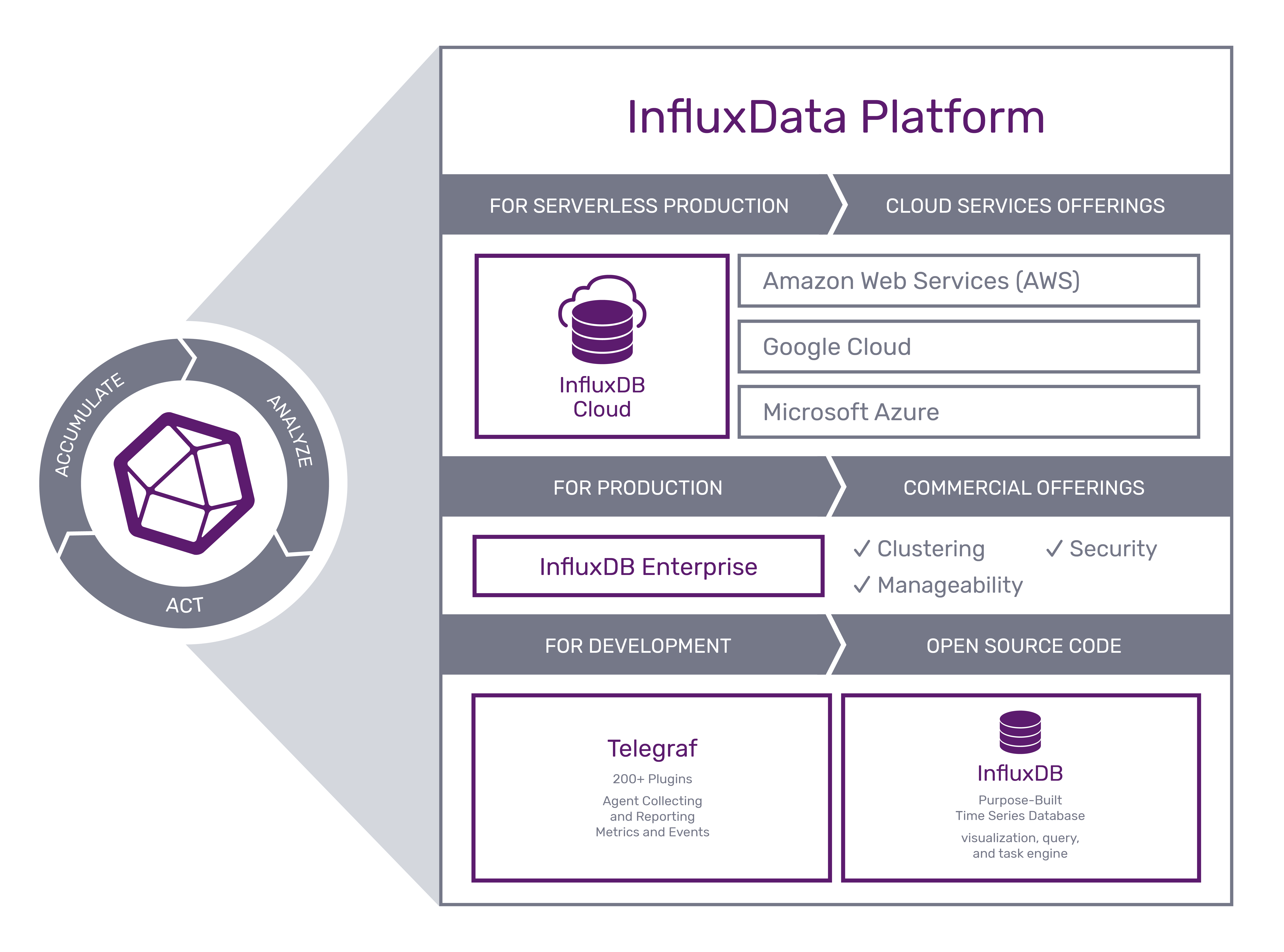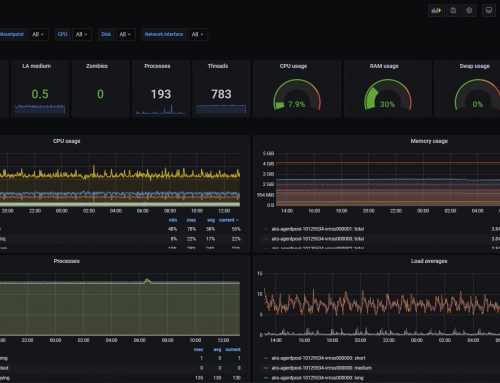
Some exciting developments have been underway at Fort Digital. Today, we’re proud to announce one of our new partnerships: we’ve teamed up with InfluxData to give our clients the slickest service possible.
For those that don’t know, InfluxData is the creator of InfluxDB, a time series database that enables you to do a huge variety of real-time analytics with every type of data imaginable. It’s also an open-source platform, which means you can start small with the free version, try it out without paying for a licence fee, and then scale up as best suits your needs.
Why did we partner with InfluxData? How does the InfluxDB platform mesh with our offerings at Fort Digital? And what are we looking forward to in the future? Read on to find out.
The Swiss army knife of databases
Let’s start at the beginning, with the basics. Why did we choose the InfluxDB database?
At Fort Digital, we specialise in infrastructure and application analytics – acting as software analytics consultants for a broad spectrum of companies and clients. Most organisations have a number of different data sources – network analysis technologies, log files, systems software – from both software and hardware. All of these different datasets are best understood in the context of time.
Often, our job involves helping organisations better understand what’s happening in real-time with their critical applications. Where are the bottlenecks? Are there any issues at the network layer, at database, at storage? And we also need to be able to look back in time at all of these combined data sources: for example, last Tuesday, there was an issue with X application at 11am.
The most commonly used databases in the world are SQL databases – what we’ve always used at Fort Digital, too. But this type of database doesn’t play well in the context of time, and it’s often made our job more difficult. It was this struggle with multiple data sources and data sets, and the need to bring the data into a central source that can be easily managed and scaled that led us to InfluxDB: a powerful, scaleable, time series database.
We think of InfluxDB as the Swiss army knife of databases: you can make it do whatever you want. Built for time series data, it’s much more performant at querying that data back – and that means we’re not trying to force a SQL database to do time series (that it’s just not built for).
Integration with other data sets and sources
This data freedom is something that’s important for us at Fort Digital. One of our unique offerings to our clients is that we don’t set out to sell them a span of new technologies; we want to enable our customers to utilise their existing data sets as much as possible, and really get value from their investments. This means we need to be able to seamlessly integrate a vast number of different data sets and sources.
A limitation we’ve come up against often is being bound by a certain way of doing things when we want to retrieve data sets from third parties with different file formats. With a lot of database technologies, to write to that database, you have to have the drivers for that database. If you want to write to a SQL server, you need a very specific software package to do it.
Not so with InfluxDB. Everything you do with Influx is HTTP based: an extremely common protocol language, used everywhere. Everything can talk HTTP. That means you don’t have to invest in specific sets of technology.
If you can’t talk directly to it, it’s really easy to build integrations that will do that translation for you. At Fort Digital, we often use Python to do this (but there are many other methods available). So as long as you can devise a way to pull data from another system, you know you can always push it to Influx, because the database is just so easy to write to.
A strong, diverse community hub
Another thing we love about InfluxData? The community and support. Since partnering with InfluxData, we’ve been active in their slack channels, attended their online training for Flux (their new functional data scripting language), and interacted with multiple stakeholders, from account managers to systems engineers.
Having a strong product is one thing, but having a company with a strong, active, engaged community around the product makes a world of difference. In the InfluxDB community, there’s always someone to chat to, swap ideas with, gain inspiration from. And you can guarantee, if you don’t know how to do something, someone else will!
Part of that is the diversity of the community: there are individuals from a huge variety of backgrounds. Data scientists, people working in IoT, even astrophysicists. Again, that’s the brilliant Swiss army knife aspect of the platform: you can store whatever you like in InfluxDB, and use it in any industry.
At Fort Digital, we’re often brought in to do jobs that are complicated and difficult (and that no one else wants to do!) Having the support of a product that can aid us in these niche use cases, and having a diverse community that enables us to look at problems with a fresh perspective, is invaluable. There are people in all sorts of different fields, who are tackling similar problems, but from different angles. That makes the community what it is.
Getting techy: some of our favourite features
One feature of InfluxDB we’re really excited about at Fort Digital is Flux – a functional data scripting language, and relatively new on the platform. We’ve been using Flux for some time now, and we can see that the technology is just going to keep growing. The more we learn, the more we’re convinced of its power!
Flux is a really powerful tool to shape and transform data. It’s a significant step away from the standard SQL approach of writing long SQL strings that do lots of different things and are difficult to read. It’s easy to write to, easy to read to – but it’s also a processing engine. Rather than simply a query language, Flux is a data scripting language: it’s for querying, but also analysing and processing data. So now we have better querying capabilities and data processing abilities. Win-win.
In short that means, you write your data to InfluxDB, but while it’s there, you can also do various types of processing in the background (the middle piece). For example: downsampling. If you’ve got very precise data – say to the millisecond – but you want it on a five minute interval, you can use InfluxDB to downsample that data. In other words, processing raw data into useful information all in one place.
This is something that’s often overlooked, but really important: being able to actually process your data within InfluxDB.
InfluxDB 2.0 is something else we’re very excited about, and we hope will replace a lot of the middleware that we’ve had to build. Soon, we’ll be able to convert that all into Flux and create new tasks there.
Looking ahead: the future of our partnership
At Fort Digital, we’re looking forward to continued engagement with the InfluxData team and the wider community: learning, sharing and inspiring each other. As well as enterprise IT, we’ve got a hemp analytics project underway, and we’ll be sharing more details on both of our use cases soon!
The fact that InfluxDB is open-source means we can shape the direction of how the software develops. And this is really exciting, too. We’re confident Fort Digital and InfluxData are going to have an enduring, successful relationship – and we can’t wait to see where we both go next.


